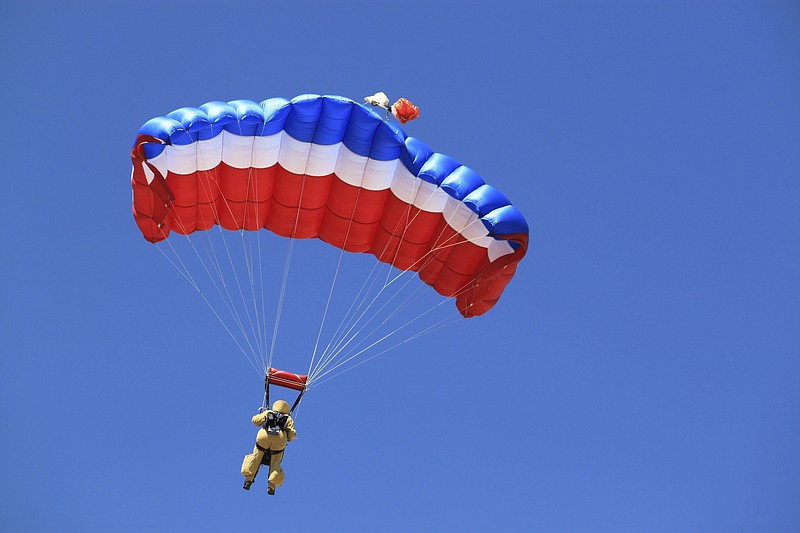RIO PUERCO, N.M. (AP) - Flying 3,000 feet (914 meters) above desert scrubland in New Mexico, Nick Stanzak taps the first smokejumper on the shoulder to signal it's his turn to leap from the twin-engine plane.
In pairs of two, the team of eight elite firefighters from Idaho and Montana parachute to the dry Rio Puerco below, each carrying about 100 pounds (44 kilograms) of gear as part of regular training so they'll be ready to be dropped close to wildfires that might break out in remote areas of the Western U.S.
Nearly 30 wildfires are currently burning - including an Arizona blaze that forced the evacuation of thousands of people plus others in California, New Mexico and Utah. Federal officials this week raised the preparedness level for U.S. firefighting forces because of the heightened fire activity.
The smokejumpers are anxiously awaiting their next assignment, with tons of gear packed and boxes of supplies, tools and food taped up and packaged to withstand being dropped from the planes while moored to parachutes.
"We'll be ready when the call comes," Stanzak said. "Who knows what the weather is going to do in a month, or even two weeks from now."
There are about 450 smokejumpers nationwide, some working for the U.S. Forest Service and others for the federal Bureau of Land Management as a joint force that can be mobilized as the fire season shifts from one place to another.
Smokejumping dates back to the 1930s, when a regional forester suggested it as a way to quickly provide initial attacks on forest fires.
During World War II, the 555th Airborne Battalion, an all African-American Army paratrooper unit, served as smokejumpers to defend against Japan's attack on the western U.S. with incendiary balloons. By the 1960s, the smokejumper program had been expanded to include a network of several bases across the West and in Alaska.
After gathering the chain saws, shovels, picks and other supplies dropped separately by planes, the smokejumpers set off on foot to fight fires with everything they need to live in the backcountry for a few days with no resupplying.
They say they're like other firefighters but just have a different way of getting to fires.
"Quite honestly, jumping out of an airplane is no different than us driving somewhere. It's actually safer," Stanzak said.
Preparations for the jumps are intense, with briefings that cover information ranging to wind speed plus anticipated temperatures and humidity levels. Jumpers have to consider how many turns they'll make with their parachutes as they descend, how close they are to their fellow jumpers in the air and what types of hazards they could encounter in landing zones.
For the practice jump, plastic orange cones represented 100-foot trees in the forest that the smoke jumpers would have to avoid in their landings. The adrenaline hits the smokejumpers when they parachute into unfamiliar terrain.
Smokejumper David Zuares, with 27 years of experience, said he and his colleagues are trained to compartmentalize their duties. The jump is one thing and fighting fires is another.
"When it's time to jump we think about jumping. We don't really think about firefighting," he said. "We might take a few notes up in the air and save those for later but we're really focused on the jump."
